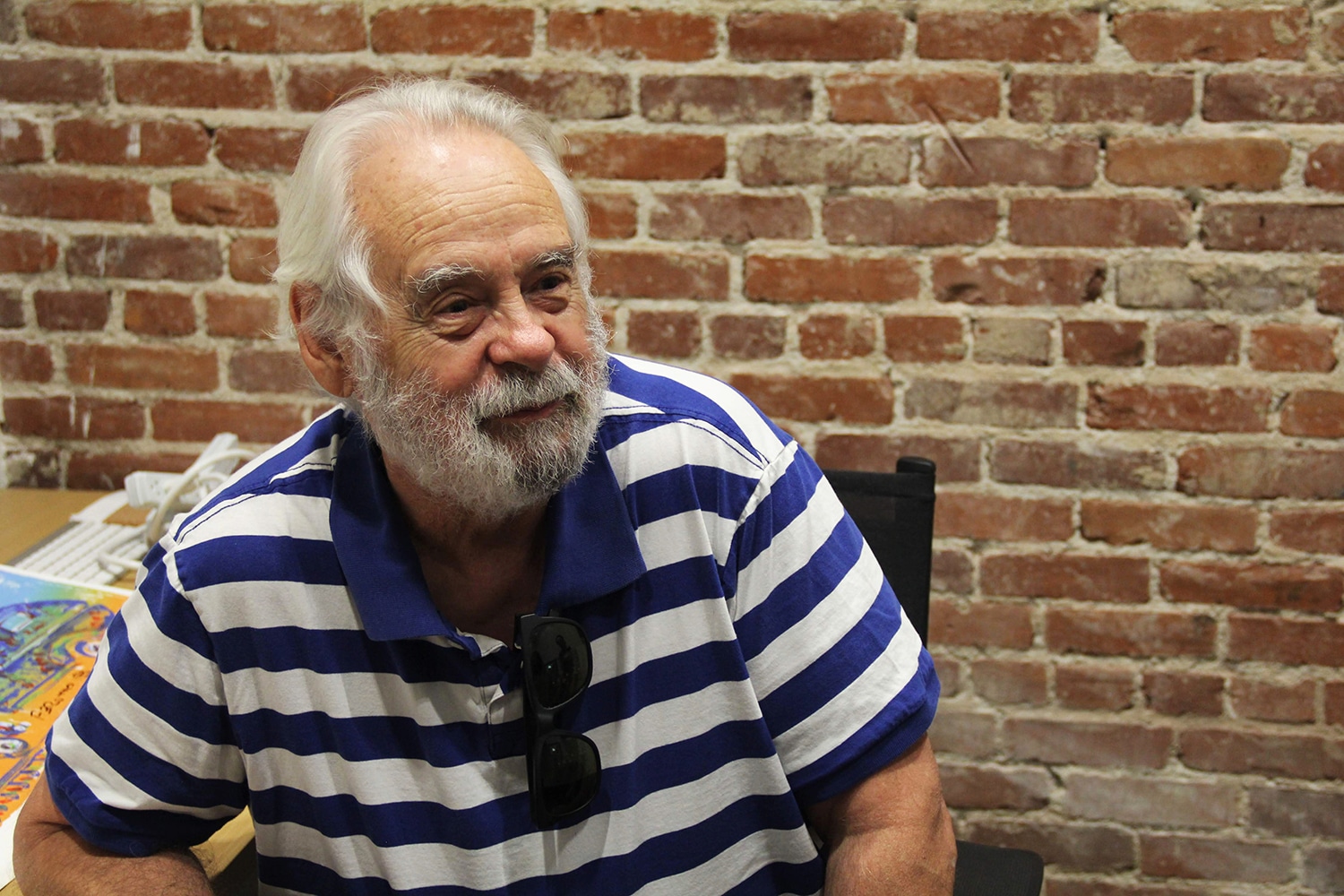
A new mural facing Highland Park’s Figueroa Street is underway, with funding and support from City Council District 1 and real estate company Pacific Union. The artist, Frank Romero, is an East LA native and former member of Los Four, an art collective that emerged from the 1970s Chicano civil rights movement. Pacific Union hosted a silent auction to fundraise for the mural’s installation at its Figueroa Street office Sept. 27.
Romero and Councilmember Gil Cedillo of District 1 both attended Roosevelt High School in Boyle Heights. According to Cedillo’s field deputy, Bill Cody, Romero originally suggested that he paint a mural. Cody was surprised about this because Romero has not painted a mural for the city in some time. After discussing the project further, Cody partnered with Pacific Union to aid in fundraising.
“I think there’s nothing that speaks more to this community than something like a Frank Romero mural. Because it’s great, like the neighborhood, but it’s also reflective of what the neighborhood has been,” Cody said. “[There’s the question of] how do we keep the flavor that brings people here? I think a mural by Frank is [that flavor].”
Romero, 77, has been a high-profile artist since the 1970s; his political and cultural paintings earned him celebrity status, according to Pacific Union realtor Alex Lozano, who recalled first becoming familiar with Romero when he heard of a small painting that sold for around $125,000.
According to Cody, Romero will provide sketches of the mural to Cody’s office Tuesday, Oct. 2. An event listing by Pacific Union stated that the mural would play off of his 1984 mural “Going to the Olympics,” which celebrated LA’s car culture and hosting of the games that year. However, Cody said it will not necessarily be close to the original, although Romero showed plans to include similar iconography of cars and hearts. What is guaranteed is Romero’s trademark bright colors and distinct brush strokes.
Occidental College art and art history part-time instructor Sandra De la Loza said many of Romero’s works celebrate “rascuache,” or everyday, working-class themes. De la Loza explained that Romero’s brush strokes emphasize the fast-paced, urban culture of LA, while the lack of depth in many of his works is similar to that of Mexican folk paintings.
Lozano, who grew up in Pasadena and played a large role in leading the event, referred to the fundraiser as a personal “passion project.”
“[Romero’s art] always centered on where he was, who he was: as an artist and how he grew up, being Chicano. Having that connection became more enticing to me,” Lozano said, who is also of Chicano background. “It’s important to note that whomever is being broadcasted on the walls, it’s a huge uplift when it’s somebody who’s homegrown.”
The silent auction took place Sept. 27 and showcased donated items from local businesses and artists. Romero himself made an appearance, staying briefly to greet attendees and sign programs.
A number of long-established businesses, like Highland Theatres and Bussard’s Automotive Repair, donated tickets, gift cards and other items. Many newer businesses that opened within the last decade also contributed: The Greyhound Bar and Grill, Cafe Birdie and the recently renovated Highland Park Bowl, to name a few. Pacific Union’s own office shares the building with Blind Barber, a speakeasy that sits one floor below and opened eight months ago. Blind Barber provided a joint venue for the event, hosting a Beatles tribute band known as The Four Lads and donating a portion of the night’s earnings to the mural fund.
In preparation for the fundraiser, realtor Maria Yvette Villalpando reached out to local businesses to seek their involvement.
“We wanted the community to not just be involved but benefit from [the auction],” Villalpando said. “This is a great way of showcasing the local businesses and having people go [to] businesses that maybe they walk by and never noticed, or they’ve wanted to go to but never had a chance.”
The city of Los Angeles has not always welcomed all murals in the past; previous city policy banned murals on private property and considered them subject to the same regulations as advertisements. This policy was revised in the Mural Ordinance of 2013, permitting private property owners to display public art on private property, according to the LA Department of Cultural Affairs. In Highland Park specifically, several unregistered murals have disappeared in recent years, including John Zender Estrada’s “Culture and Peace” and a few more on city parking lot fences.
The discourse surrounding the community’s murals contributes to a larger conversation about Highland Park’s ongoing physical and economic transformation; as building owners switch and the aesthetic of the streets changes, the murals are subject to erasure. However, Cody obtained the required permission for Romero’s mural, ensuring its safety. Cody said that District 1’s office cannot stop new owners from painting over murals — if not registered, they are considered illicit graffiti.
The city will hold a public unveiling and commencement event Oct. 20, in tandem with a car show that echoes Romero’s features of car culture in his art. Romero will paint the mural on Avenue 57, just south of Figueroa and next to The Ebell, a historical building and popular spot for community gatherings.
![]()


































